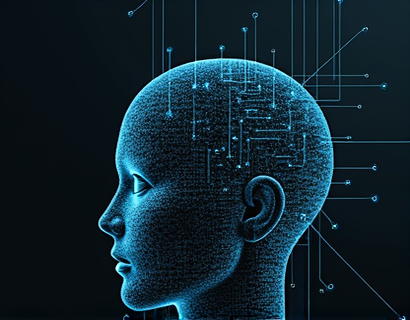Transforming Healthcare Communication: The Impact of AI-Powered Chatbots in Intensive Care Units
In the rapidly evolving landscape of healthcare technology, AI-powered chatbots are emerging as a pivotal tool in enhancing access to critical information within Intensive Care Units (ICUs). These sophisticated chat interfaces are designed to bridge the knowledge gap among various stakeholders, including patients, caregivers, and healthcare professionals, by providing real-time insights and fostering better communication. This article delves into the transformative role of AI chat solutions in ICU settings, highlighting how they are revolutionizing the way information is disseminated and utilized, ultimately leading to improved patient outcomes and more informed decision-making.
The Need for Enhanced Communication in ICUs
ICUs are environments where every second counts, and the stakes are incredibly high. The complexity of patient care, combined with the urgency of decisions, necessitates a robust system for information exchange. Traditionally, accessing detailed ICU knowledge and services has been a challenge due to the vast amount of information and the time-sensitive nature of healthcare decisions. This is where AI-powered chatbots come into play, offering a seamless and instantaneous way to retrieve crucial data.
Real-Time Access to ICU Information
One of the most significant advantages of AI chatbots in ICUs is their ability to provide real-time access to a wide range of information. Whether it's detailed patient records, the latest research findings, or procedural guidelines, these chatbots can deliver the necessary insights instantly. For healthcare professionals, this means quicker access to critical data, enabling them to make more informed and timely decisions. For patients and caregivers, it means having immediate answers to their questions, reducing anxiety and enhancing their understanding of the care process.
Enhancing Patient and Caregiver Communication
The role of AI chatbots extends beyond just providing information; they actively enhance communication between patients, caregivers, and healthcare providers. By offering a user-friendly interface, these chatbots ensure that complex medical information is presented in an accessible and understandable format. This is particularly beneficial for patients who may be overwhelmed by the intricacies of their condition and treatment. Caregivers, who often serve as a critical link between patients and medical teams, can also benefit from these chatbots, gaining quick access to information that helps them support their loved ones more effectively.
Empowering Healthcare Professionals
For healthcare professionals, AI chatbots are invaluable tools that streamline their workflow and enhance their ability to provide high-quality care. These chatbots can quickly answer common questions, provide protocol updates, and even assist in diagnosing conditions based on symptom inputs. This not only saves time but also reduces the cognitive load on medical staff, allowing them to focus more on patient care. Additionally, AI chatbots can integrate with existing hospital systems, ensuring that all relevant data is up-to-date and easily accessible.
Improving Decision-Making Processes
Informed decision-making is crucial in ICU settings, where the consequences of errors can be severe. AI chatbots contribute to this process by offering evidence-based recommendations and summarizing complex medical literature. By providing quick access to the latest research and clinical guidelines, these chatbots help healthcare professionals stay current with the best practices in their field. This ensures that decisions are based on the most recent and reliable data, ultimately leading to better patient outcomes.
Case Studies and Real-World Applications
Several hospitals and healthcare organizations have already implemented AI chatbot solutions in their ICUs with promising results. For instance, a major hospital in the United States integrated an AI chatbot to assist nurses and doctors in managing patient care. The chatbot provided real-time updates on patient conditions, medication schedules, and potential complications. As a result, the hospital reported a 20% reduction in response times to critical alerts and a significant improvement in patient satisfaction scores.
Another example is a European healthcare network that deployed AI chatbots to support family members of ICU patients. The chatbots offered personalized updates on patient status, answered common questions, and provided resources for emotional support. This initiative not only alleviated some of the burden on medical staff but also enhanced the overall patient experience by keeping families informed and involved in the care process.
Technological Underpinnings of AI Chatbots in Healthcare
The effectiveness of AI chatbots in healthcare settings is rooted in advanced technological frameworks. These chatbots leverage natural language processing (NLP) to understand and respond to user queries accurately. Machine learning algorithms enable the chatbots to learn from interactions, improving their performance over time. Integration with electronic health records (EHRs) ensures that the information provided is current and relevant, further enhancing the chatbot's utility.
Moreover, the use of chatbots in ICUs is supported by robust security measures to protect sensitive patient data. Compliance with healthcare regulations such as HIPAA in the United States and GDPR in Europe is paramount, ensuring that patient privacy is maintained at all times.
Challenges and Future Directions
Despite the numerous benefits, the implementation of AI chatbots in ICUs is not without challenges. One of the primary concerns is the need for high-quality, up-to-date data to train and maintain these chatbots. Ensuring the accuracy and reliability of the information provided is crucial. Additionally, there is a need for user training to ensure that all stakeholders can effectively utilize these chatbots.
Looking ahead, the future of AI chatbots in healthcare is promising. Advancements in AI technology, such as more sophisticated NLP and emotional intelligence, will further enhance the capabilities of these chatbots. The integration of AI chatbots with other healthcare technologies, like telemedicine and remote monitoring systems, will create a more connected and efficient healthcare ecosystem. The goal is to create a seamless user experience that continues to improve patient care and outcomes.
Conclusion
The introduction of AI-powered chatbots in ICUs represents a significant step forward in healthcare technology. By providing instant access to critical information, enhancing communication, and supporting informed decision-making, these chatbots are transforming the way care is delivered in critical settings. As the technology continues to evolve, the potential for even greater impact on patient outcomes and healthcare efficiency is immense. Embracing these innovations is essential for healthcare providers aiming to stay at the forefront of medical care.










































